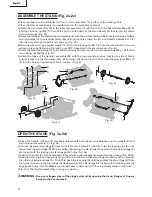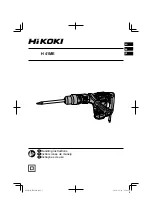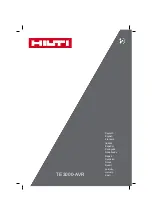
A
B
C
D
WARNING:
Make sure the blade guard is in place after adjusting
the blade depth. Failure to heed this instruction
could result in serious personal injury.
Blade depth should be set so that outer points of blade (A) are higher than workpiece by approximately
1/8 in. to 1/4 in. and bottom of gullets are below top surface of workpiece.
• Turn the bevel locking lever (B) clockwise to tighten it securely.
• Raise blade (A) by turning height adjusting handle (C) on the
height/bevel adjusting handwheel (D) clockwise. Lower blade by
turning height adjusting handle (C) counter-clockwise.
• Make sure blade (A) is at proper height.
CHANGING BLADE DEPTH (FIG. 18)
Fig. 18
2
3
1
C
B
A
3
Fig. 19
• Loosen the bevel locking lever (A) counter-clockwise.
• Adjust bevel angle by first pushing height/bevel adjusting
handwheel (B) all the way to the left.
• Holding height/bevel adjusting handwheel, slide bevel indicator
to the right to increase angle of blade (C) (bringing it closer to 45°
from the tabletop). Holding height/bevel adjusting handwheel,
slide bevel indicator to the left to decreases the angle (bringing
blade closer to 90° from the tabletop).
• Make sure blade (C) is at desired angle. Tighten bevel locking
lever (A) clockwise.
CHANGING BLADE ANGLE (BEVEL) (FIG. 19)
CAUTION:
A 90° cut has a 0° bevel and a 45° cut has a 45° bevel.
CAUTION:
If bevel indicator is not at zero when saw blade is at 0°, see the section “ADJUSTING BEVEL
INDICATOR”.
WARNING:
Make sure the blade guard is in place after adjusting
blade angle. Failure to heed this instruction could
result in serious personal injury.
30
English
A
The saw is equipped with an overload switch (A) to prevent the saw
from overload damage. The saw will stop if the machine was
overloaded with cutting or low voltage. Turn the switch to the OFF
position and allow the motor to cool down for at least five minutes.
Press the overload switch button to reactivate the overload switch.
After the motor has cooled down, turn the switch to the ON position.
The saw should now start.
OVERLOAD PROTECTION (FIG. 17)
Fig. 17
1
2
















































